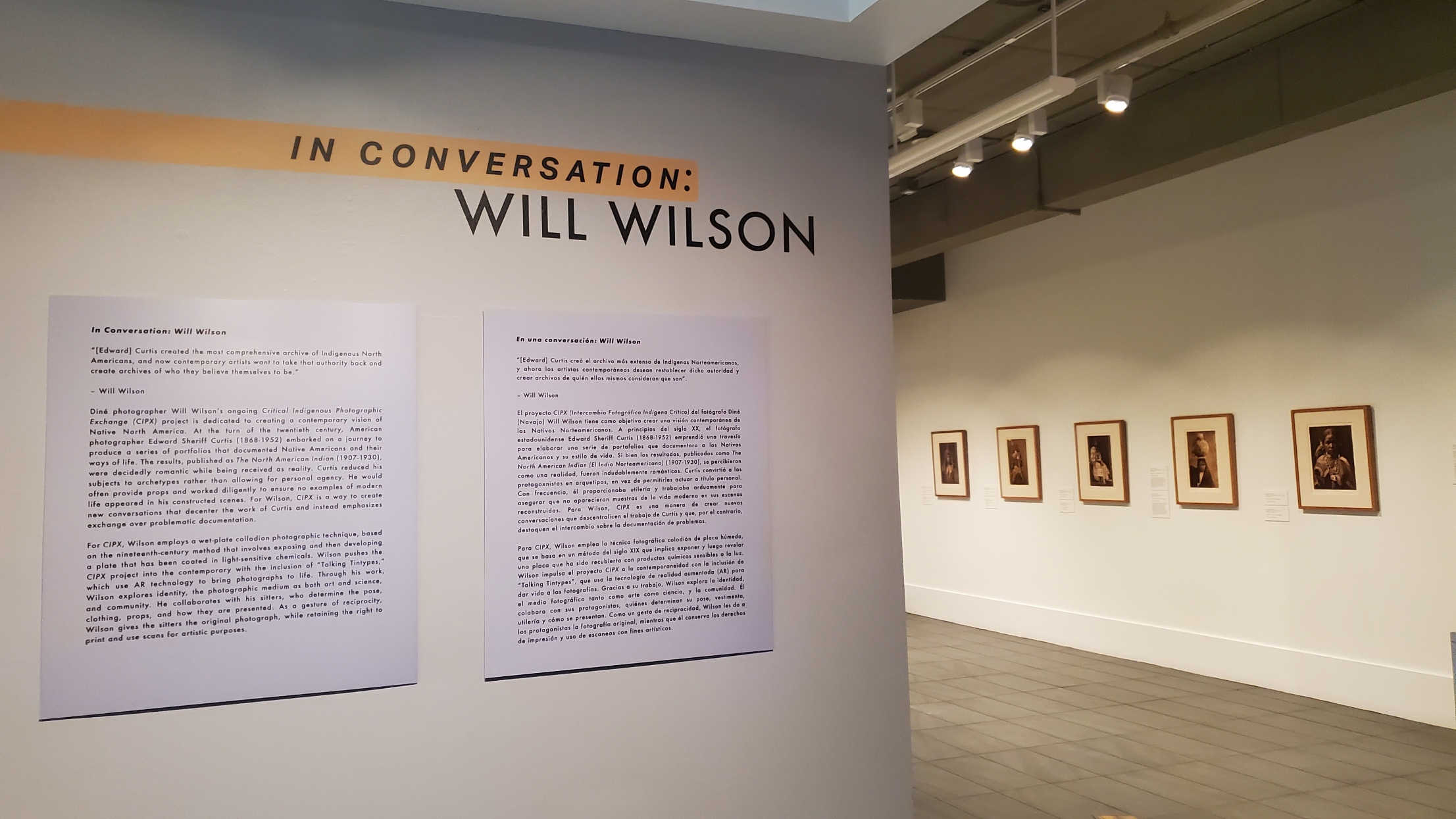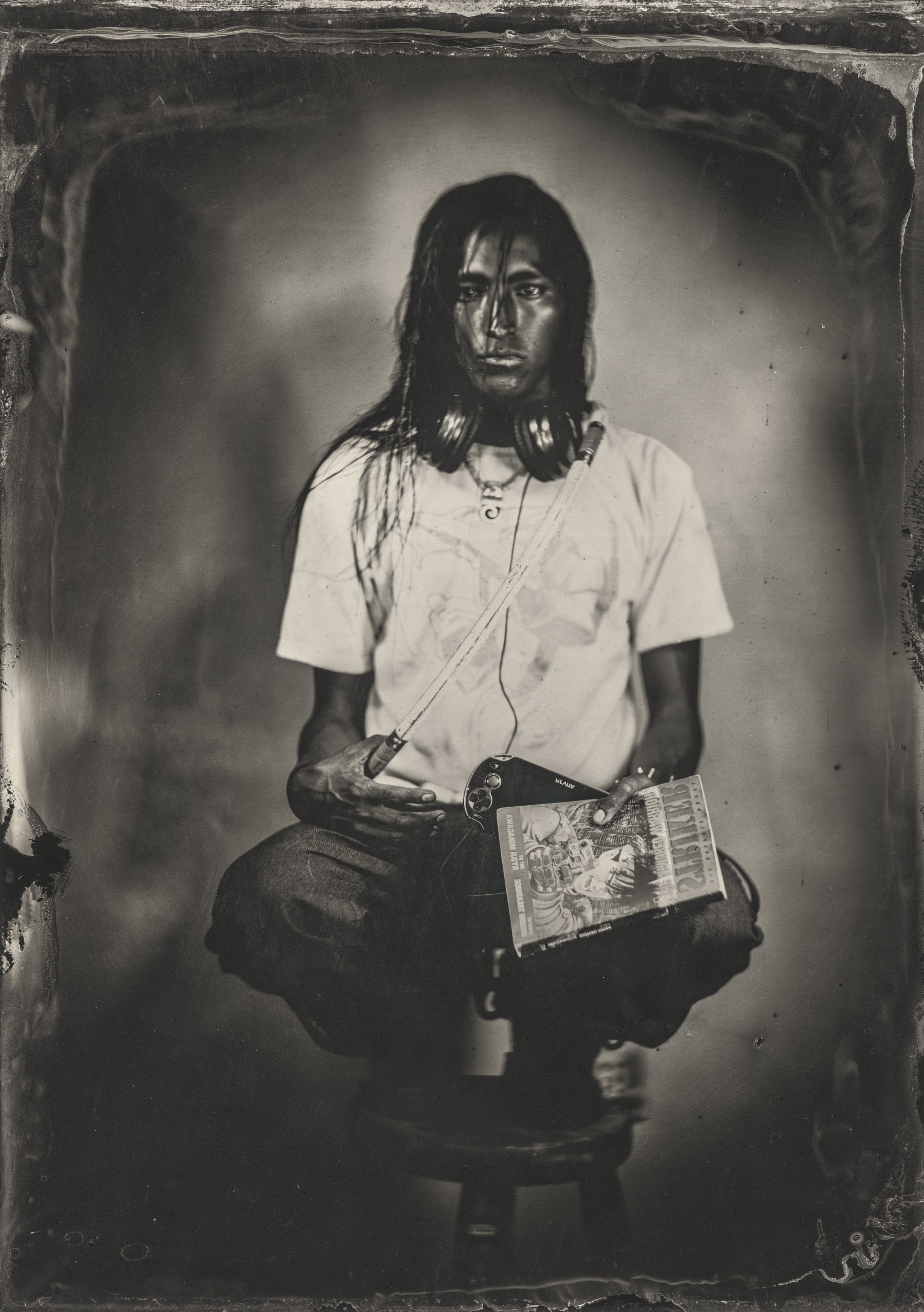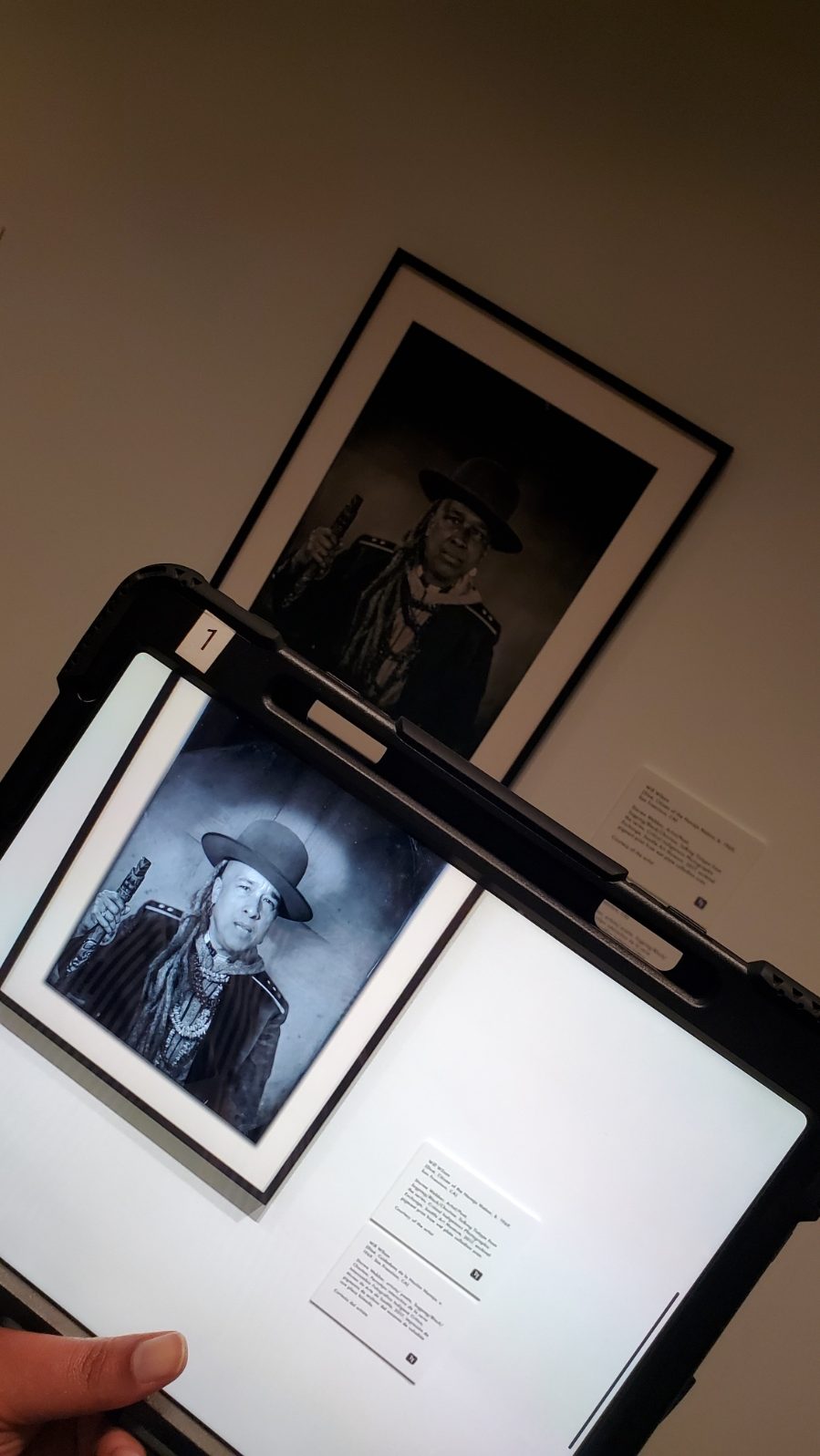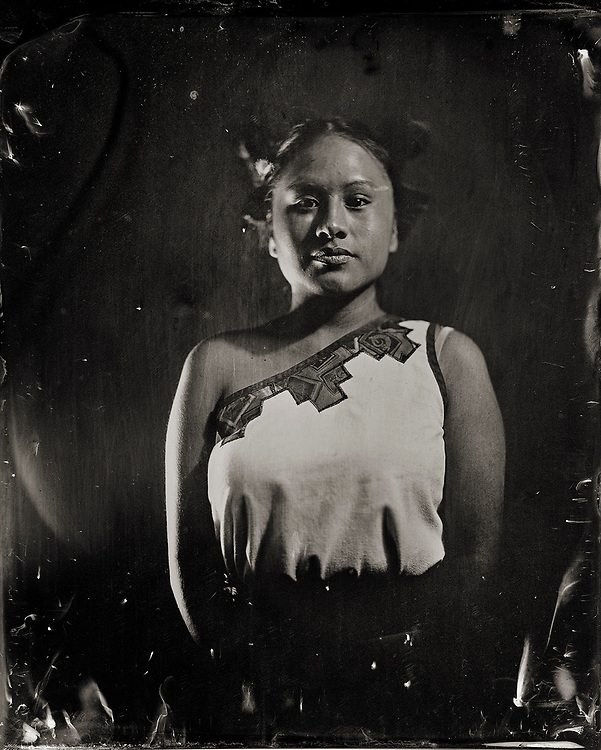In Conversation: Will Wilson
PDF: Navaroli, review of In Conversation
Curated by: Mindy Besaw1 and Ashley Holland
Exhibition schedule: Denison Museum, Granville, OH, August 23, 2021–November 19, 2021; Delaware Art Museum, Wilmington, July 9, 2022–September 11, 2022; Mennello Museum of American Art, Orlando, FL, October 28, 2022–February 12, 2023; McClung Museum of Natural History and Culture at the University of Tennessee, Knoxville, August 18–December 2, 2023; Yellowstone Art Museum, Billings, Montana, February 15–June 2, 2024; San Angelo Museum of Fine Arts, Texas, July 11–September 15, 2024; Sun Valley Museum of Art, Ketchum, Idaho, October 2024–January 2025; Iowa State University Museums, Ames January 21–May 4, 2025; Albany Museum of Art, Georgia, July 11–September 15, 2025
Will Wilson (b. 1969; Diné) is an internationally recognized photographer whose work is grounded in Indigenous cultural practice. Since the early 2000s, the artist has engaged with interdisciplinary practices, including digital technologies, to not only critique the role of colonialism in the study of art and science but also to engage in a critical dialogue with the historic constructions of Indigeneity. In 2012, he initiated the Critical Indigenous Photographic Exchange (CIPX)—a project focused on confronting the harmful narratives of expansion, exploitation, and erasure perpetuated by European colonialism in the United States. The CIPX series forms the core of the traveling exhibition In Conversation: Will Wilson.
Organized by the Crystal Bridges Museum of American Art in Bentonville, Arkansas, the expansive In Conversation: Will Wilson tour is enabled by the Art Bridges Foundation, the museum’s funded initiative focused on expanding the accessibility and relevance of American art to regional communities. The exhibition was curated by Mindy Besaw, Curator of American Art / Director of Fellowships and Research at the Crystal Bridges Museum of American Art, and Ashley Holland (Cherokee), Associate Curator from the Art Bridges Foundation. I visited In Conversation during its presentation at the Mennello Museum of American Art in Orlando, Florida (the third venue on its national tour). Founded in 1998, the Mennello, owned by the city of Orlando and located in historic Loch Haven Park, features rotating exhibitions, an outdoor sculpture garden, and displays curated from its permanent collection of American art. As a Smithsonian American Art Museum Affiliate, the museum has made great strides in recent years to diversify its exhibitions and collections, particularly with respect to the representation of women and communities of color.
In Conversation features thirty-three prints, seventeen by Wilson and sixteen by the nineteenth-century photographer Edward Sherriff Curtis (1868–1952). The exhibition is divided across three galleries, allowing for a straightforward, T-shaped path. The Mennello’s space was complemented by low-level lighting designed to accommodate the sensitivity of the photographic prints. Closely mirroring nineteenth-century techniques, Wilson’s process involves exposing and developing a photographic plate coated in light-sensitive chemicals. Inadvertently, the dim light required to ensure the stability of the resulting prints also underscores the exhibition’s sense of theatricality. The exhibition began with a large flanking title wall that introduced Wilson and the CIPX project in both English and Spanish (fig. 1). Orlando is a diverse metropolitan area with a large Spanish-speaking population, so the bilingual labels were relevant and appreciated. To the right of the museum’s admissions desk, visitors could read text panels that briefly described photographer and filmmaker Curtis.

Curtis was known for his series of photographs documenting Native Americans at the turn of the twentieth century. He worked for decades, taking more than forty thousand photographs and producing more than ten thousand recordings of Indigenous languages and music. Financially supported by the sponsorship of J. Pierpont Morgan and the written endorsement of President Theodore Roosevelt, Curtis published his work in the twenty-volume The North American Indian (1907–1930). The publication includes 723 images with descriptions meant to record aspects of Indigenous Peoples’ “threatened” way of life. Meant as ethnographic research, Curtis’s idealized photographs have been criticized for presenting Native sitters as objects subject to a Eurocentric gaze that fetishizes their existence, denies their modernity, and perpetuates tropes associated with them as a “vanishing race.” Notably, when initially presented at Crystal Bridges in 2019, the exhibition was titled In Conversation: Will Wilson and Edward Curtis. Wilson requested, however, that Curtis’s name be removed from the exhibition’s title for its national tour. Although outdoor banners displayed on the Mennello’s façade reflect the initial rather than the modified title, Wilson’s advocacy for removing Curtis’s name is a symbolically impactful decision that shifts the conversation toward Indigenous agency and away from imposed stereotypes (however well-intentioned they might have been in the nineteenth century). Wilson’s and Curtis’s works were presented in an integrated fashion, flanking one another or juxtaposed, such as Curtis’s Bear’s Belly–Arikara (1908) and Wilson’s Walt Pourier, Citizen of the Oglala Nation, Founder of the Stronghold Society (2013). In these arrangements, works were positioned so that one artist “faced” the other, creating a dialogue positioned across physical space, metaphorical time, and ideological intent.
In Conversation directly engages with the legacy of Curtis’s The North American Indian by presenting a counternarrative: Indigenous subjects photographed by an Indigenous artist and with consideration for an Indigenous worldview. As Wilson asserts in the exhibition’s introductory text, “Curtis created the most comprehensive archive of Indigenous North Americans, and now contemporary artists want to take that authority back and create archives of who they believe themselves to be.” Wilson’s use of augmented reality (AR) is a key method in making these claims tangible for a twenty-first-century audience. Although AR usage in museum spaces is still in its infancy, increasingly cultural institutions are expanding in-gallery technologies to complement the growing number of visitors who use mobile devices. Wilson’s Talking Tintypes app (available through iTunes and Google Play) allows visitors to use their smart devices to view unique interactions with select works in the exhibition. Created in Unity, a gaming-development platform with broad usage for a variety of game-design skill sets, Talking Tintypes portraits seemingly come to life with active performances. For example, Madrienne Salgado of the Muckleshoot Nation dances in a jingle dress that sways and chimes with her rhythmic movements. Violinist Swil Kanim’s tintype portrait, when activated, plays a haunting reinterpretation of the problematic nursery rhyme “Ten Little Indians,” a song glorifying genocide.

Rather than employing AR as a superfluous tech-for-tech’s-sake feature, the exhibition features AR as a critical form of participation in the exhibition’s eponymous conversation. AR has been particularly praised over other extended-reality (XR) platforms for its ability to engage with Indigenous knowledge systems. Unlike the completely fabricated world of virtual reality (VR), for example, AR creates a hybrid space where digital environments can connect to local geography, redefining the physical environment and creating experiences grounded in reflexive, interdisciplinary frameworks. When deployed in the gallery space, digital technologies can pose some technical challenges, however. For example, although I was able to download the Talking Tintypes app, my older smartphone could not activate the portraits, so I relied on iPads available at the Mennello’s front desk.
Cultural hybridity and exchange are prominent undercurrents of In Conversation. In contrast to Curtis, who instructed his subjects to wear specific costumes, Wilson encouraged sitters to personally choose their clothing and props. For example, a portrait of the late Nakotah LaRance (fig. 2), a citizen of the Hopi Nation and a world champion hoop dancer, features the young man squatting on top of a stool in a moment meant to suggest imminent movement. LaRance has a hoop wrapped around his torso, but he also wears prominent headphones around his neck that visually connect to a video-game console and a Japanese manga (graphic novel) displayed in his left hand. Wilson considers his relationship with individual subjects as a collaboration, one in which agency and reciprocity are central. As a demonstration of their partnership, the sitter is given the original portrait, while Wilson is granted use and copyright for scanned reproductions.

Talking Tintypes further reinforces the exhibition’s sense of hybridity and intersectionality, particularly in the portraits of Raven Knight, a dancer and citizen of the Jicarilla Apache Nation, who poses in clothing native to South Africa, and Storme Webber, whose face is accented by elegant cascading dreadlocks and a wide-brimmed hat (fig. 3). When activated, Webber, a Sugpiaq/Black/Choctaw artist and poet, recites a powerful spoken-word performance that reinforces her multicultural identity. Afro-Indigenous communities, reflective of the complex interactions between enslaved and free African descendants and Indigenous Peoples, are underrecognized within both Indigenous and African American Studies scholarship. Although Afro-Native histories can vary greatly—from Black people who sought refuge in Indigenous communities to those owned by Indigenous Peoples—historians, such as Tiya Miles, argue that their presumed absence in the cultural record has severely limited our understanding of American history.2 Therefore, Wilson’s inclusion of such subjects is an important act of visibility that supports the exhibition’s greater focus on dispelling fixed constructions of homogeneity among Native people.

The exhibition’s use of technology also points to a futurist framework. Indigenous futurism, a term coined by Anishinaabe scholar Grace L. Dillon in homage to Afrofuturism, is an artistic movement built on the negotiation of new realities and innovative storytelling in Native communities. The genre blends elements from science fiction and popular culture to renegotiate exchange and center Native influence. For example, the Talking Tintypes portrait Insurgent Hopi Maiden, Melissa Pochoema, Citizen of the Hopi Tribe (fig. 4) highlights the influence of Hopi culture on the creator of the legendary Star Wars franchise, George Lucas. Lucas’s iconic design for the character Princess Leia in Star Wars: Episode IV—A New Hope was inspired by the double-bun hairstyle of Hopi women and the colonialist history of the American Southwest. In particular, it references the Pueblo Revolt of 1680, an Indigenous resistance that temporarily liberated Native people from Spanish invasion in present-day New Mexico. Although victory was not permanent, the revolt represents a critical event in Indigenous history and also served as inspiration for the defiant spirit of Lucas’s intergalactic heroine. When activated, Pochoema’s portrait recreates the emergency message sent from Princess Leia to Jedi warrior Obi-Wan Kenobi, in this case sent back through time to Po’Pay, the celebrated leader of the Pueblo Revolt. Native artists such as Virgil Ortiz (b. 1969; Cochiti Pueblo) use the Revolt and Indigenous Futurist concepts to expand the ways that Native history is engaged and represented. Recent exhibitions, including the Institute of American Indian Arts (IAIA) Museum of Contemporary Native Arts (MoCNA) Indigenous Futurism: Transcending Past/Present/Future (2020), presented a wide-ranging selection of Native artists whose works intersect with themes grounded in science fiction, cosmology, and oral tradition.
The final section of In Conversation was displayed in the Mennello’s Education Resource Center. Here visitors could interact with a model of a historic nineteenth-century camera, watch media related to Wilson’s work, view selections from the Mennello’s collection of prints by Native artists, and read books related to Florida’s Indigenous Peoples. In this room, visitors were also invited to take a snapshot of themselves with an available Fujifilm Instax camera. To expand the exhibition’s emphasis on reciprocity, visitors were encouraged to share one photograph with the museum’s community wall and take another image home with them as a reminder of their experience.
In Conversation: Will Wilson functions as an effective intervention for museum practice that challenges the nature of the historical archive. A century ago, the medium of photography was viewed as an “objective” form of documentation that aided in realistic, rather than caricatured, representations of Native people. However, photographers like Curtis, working within the beliefs and constructs of their time, also contributed to biases and assumptions that continue to permeate the display of Native subjects and material culture. In Conversation and its accompanying Talking Tintypes AR app speak back to hegemonic systems and model opportunities for innovative audience engagement. Visitors will likely walk away with a new and/or renewed appreciation for the value and importance of elevating Indigenous-centered narratives in the museum environment.
Cite this article: Keidra Daniels Navaroli, review of In Conversation: Will Wilson, Mennello Museum of American Art, Orlando, Panorama: Journal of the Association of Historians of American Art 9, no. 1 (Spring 2023), https://doi.org/10.24926/24716839.17458.
Notes
- Mindy Besaw is Co-Chair of the Association of Historians of American Art. ↵
- Tiya Miles’s scholarship emphasizes the challenges of racial hybridity and categorization in US history. For example, she documents the lives of nineteenth-century Cherokee warrior Tarsekayahke or “Shoe Boots” and his enslaved partner, Doll, as well as the unsuccessful lobbying efforts for Cherokee citizenship by their Afro-Cherokee children and mixed-race descendants. Miles argues that their familial story is representative of the ideological clashes and erasures that occurred between “colonialism, slavery, and gender domination in the nineteenth-century American Indian South”; Tiya Miles, Ties That Bind: The Story of an Afro-Cherokee Family in Slavery and Freedom (Berkeley: University of California Press, 2015), xiv. ↵
About the Author(s): Keidra Daniels Navaroli is a McKnight Doctoral Fellow in the Texts and Technology PhD Program at the University of Central Florida.

